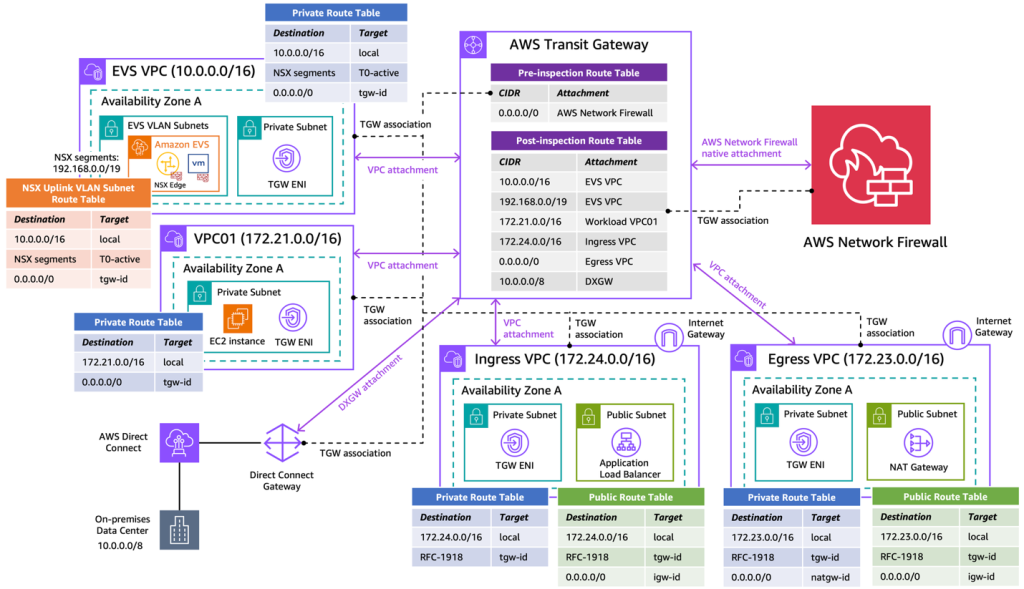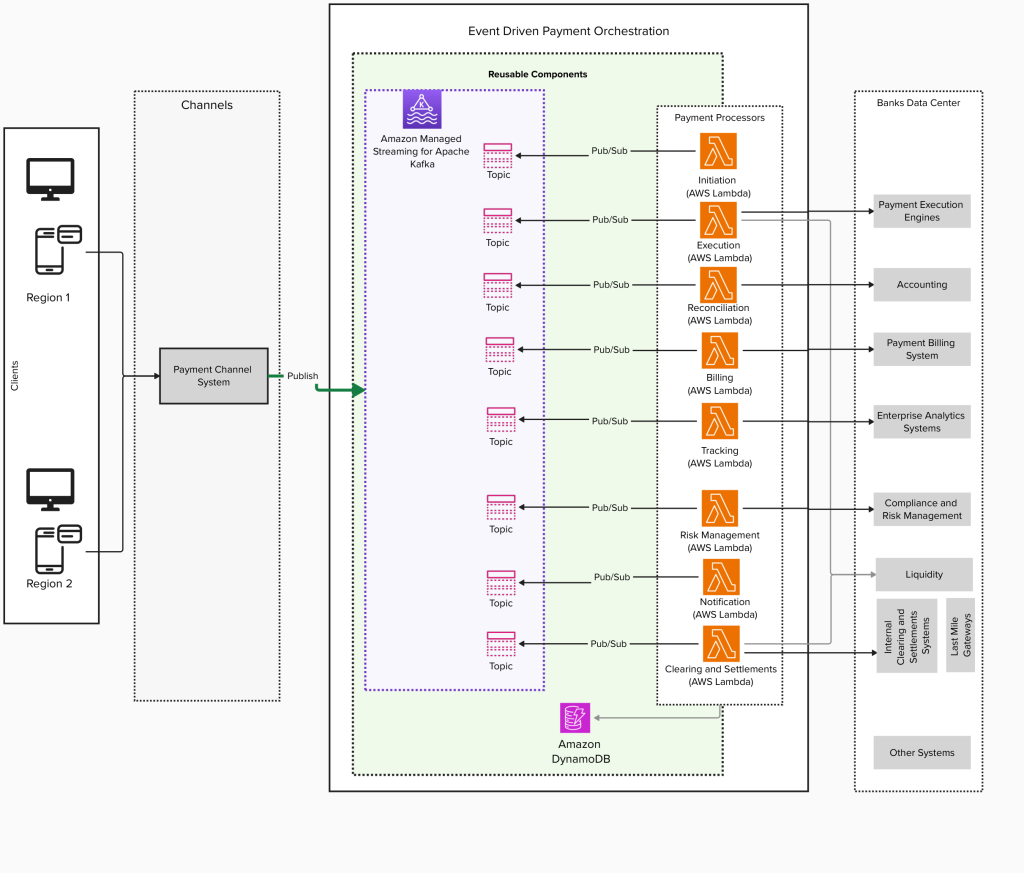AWS Architecture Blog
Category: Networking & Content Delivery
Secure Amazon Elastic VMware Service (Amazon EVS) with AWS Network Firewall
In this post, we demonstrate how to utilize AWS Network Firewall to secure an Amazon EVS environment, using a centralized inspection architecture across an EVS cluster, VPCs, on-premises data centers and the internet. We walk through the implementation steps to deploy this architecture using AWS Network Firewall and AWS Transit Gateway.
Modernization of real-time payment orchestration on AWS
The global real-time payments market is experiencing significant growth. According to Fortune Business Insights, the market was valued at USD 24.91 billion in 2024 and is projected to grow to USD 284.49 billion by 2032, with a CAGR of 35.4%. Similarly, Grand View Research reports that the global mobile payment market, valued at USD 88.50 […]
How CommBank made their CommSec trading platform highly available and operationally resilient
In this post, we explore how CommSec, Australia’s leading online broker, transitioned from a multicloud environment to AWS as their sole cloud provider while implementing Amazon Application Recovery Controller (ARC) zonal shift to maintain high availability and operational resilience. The consolidation resulted in significant benefits including 25% base capacity reduction, two times faster deployments, and improved failover capabilities through ARC zonal shift, enabling CommSec to continue serving millions of customers while meeting strict regulatory requirements.
How HashiCorp made cross-Region switchover seamless with Amazon Application Recovery Controller
In this post, we discuss HashiCorp’s journey from manual, stress-inducing failover procedures to a streamlined, confident approach that fundamentally changed how they deliver on their enterprise-grade resilience promises.
Amazon Bedrock baseline architecture in an AWS landing zone
In this post, we explore the Amazon Bedrock baseline architecture and how you can secure and control network access to your various Amazon Bedrock capabilities within AWS network services and tools. We discuss key design considerations, such as using Amazon VPC Lattice auth policies, Amazon Virtual Private Cloud (Amazon VPC) endpoints, and AWS Identity and Access Management (IAM) to restrict and monitor access to your Amazon Bedrock capabilities.
Build a multi-Region AWS PrivateLink backed service with seamless failover
This post demonstrates how the Issuer Solutions business of Global Payments, as a service provider, implemented cross-Region failover for an AWS PrivateLink backed service exposed to their customers. Their solution enables failover to a secondary Region without customer coordination, reducing Recovery Time Objective (RTO).
How UNiDAYS achieved AWS Region expansion in 3 weeks
In this post, we share how UNiDAYS achieved AWS Region expansion in just 3 weeks using AWS services.
From virtual machine to Kubernetes to serverless: How dacadoo saved 78% on cloud costs and automated operations
In this post, we walk you step-by-step through dacadoo’s journey of embracing managed services, highlighting their architectural decisions as we go.
Top Architecture Blog Posts of 2024
Well, it’s been another historic year! We’ve watched in awe as the use of real-world generative AI has changed the tech landscape, and while we at the Architecture Blog happily participated, we also made every effort to stay true to our channel’s original scope, and your readership this last year has proven that decision was […]
How an insurance company implements disaster recovery of 3-tier applications
A good strategy for resilience will include operating with high availability and planning for business continuity. It also accounts for the incidence of natural disasters, such as earthquakes or floods and technical failures, such as power failure or network connectivity. AWS recommends a multi-AZ strategy for high availability and a multi-Region strategy for disaster recovery. […]









